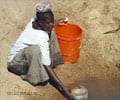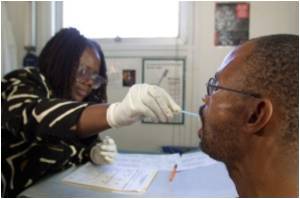
"People are dying from diseases that we know how to cure, such as tuberculosis, malaria and dysentery," Epstein said. "But there are a number of current problems in the way that we deliver life-saving medicine, technologies and care. And this is where business professionals can step in and make a difference: Businesses know how to disseminate products and services."
In developing countries, health care often relies on both the public and private sectors. Unfortunately, these sectors are often poorly coordinated, regulated and supported, which results in gaps in services, lost opportunities and unsustainable systems, Epstein said. In many countries, health care providers compete with each other. Often, these providers serve only marginally overlapping markets with radically different types of services. Thus, significant benefits can follow from integrating a comprehensive distribution plan.
In the report (see page 128), Epstein and Bing identify five distribution channels –microentrepreneurs, microclinics, micropharmacies, mobile distribution of supplies and services, and hospitals – and discuss how they can be better aligned to help more people. The report also cites examples of the distribution model put into use.
The approach that Epstein and Bing suggest builds on many existing new developments from governments, nongovernmental organizations (NGOs) and businesses in developing countries. The organizations are starting to effectively deliver health products and services but the approaches need to be scaled significantly. Epstein and Bing provide a simple, coordinated approach that integrates different distribution channels in existing and new organizations to use current knowledge and solutions to save lives. The approach addresses prevention, diagnosis and treatment using existing human and financial resources. There is a shortage of medical personnel but an abundance of potential microentrepreneurs who can effectively distribute health service and technologies. Access to health care is severely limited in developing countries, Epstein said. The approach described by Epstein and Bing can reduce costs, reduce sick days, improve the social and economic lives of the poor and save lives.
"To solve the challenge of availability and accessibility, these distribution systems must rely heavily on a sustainable model that integrates and complements governmental and NGO support and facilitates the coordination of products and services," Bing said. "With this approach, increased scale improves cost efficiency, access to products and services, financial sustainability, and societal health and well-being."
Advertisement
The authors note that the model and methods described in the report provide an outline for complete and comprehensive health care systems for developing countries. In resource-constrained settings, however, many of the redundancies and overlap between providers might not be possible or desirable, Epstein said. Instead, specific countries would likely adapt this approach in the ways they see as most appropriate for their capacity and needs. They may also be able to use these examples to identify new programs and integrate or mimic successful organizations to maximize the impact of the limited funds available for health.
Advertisement











